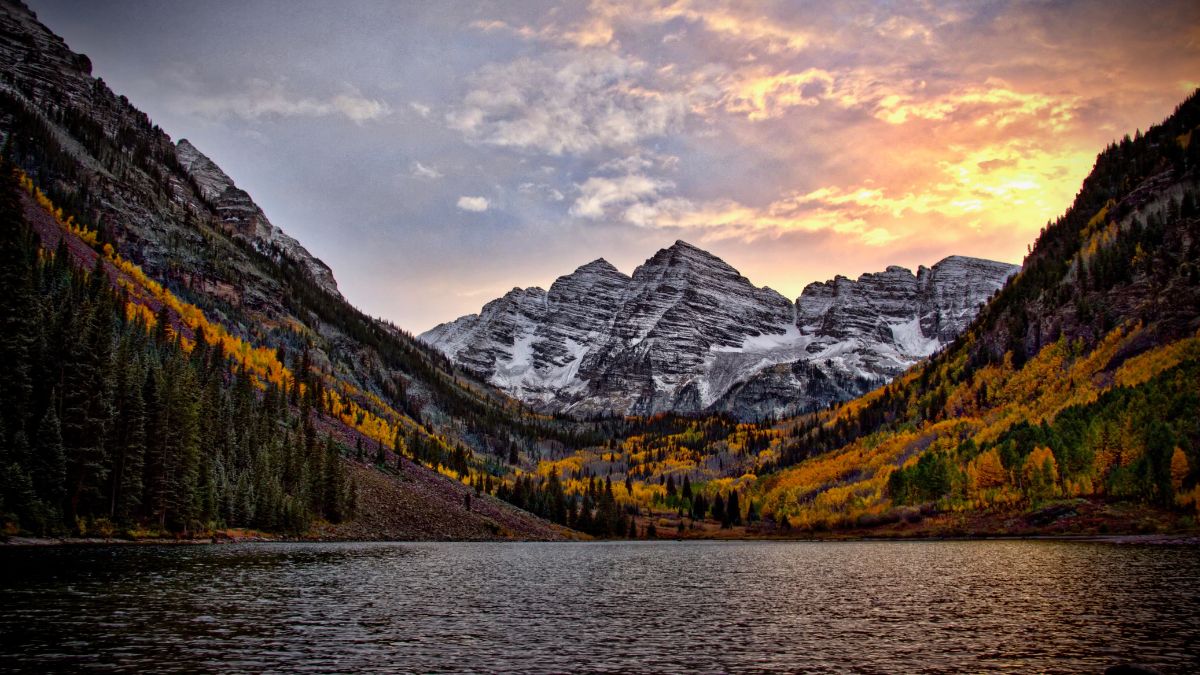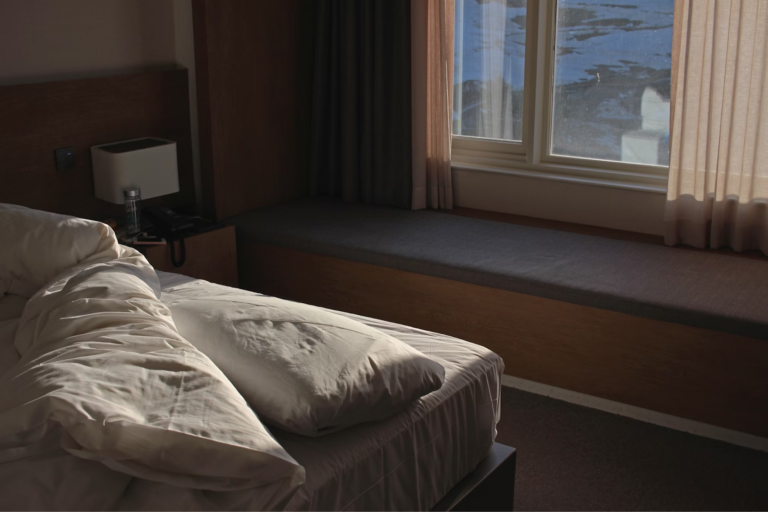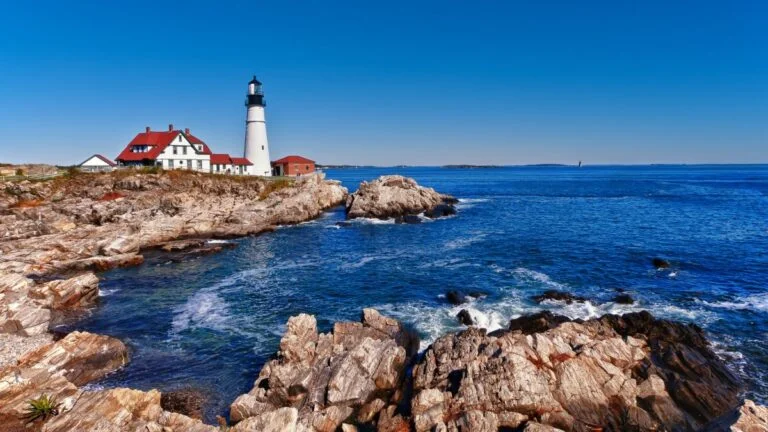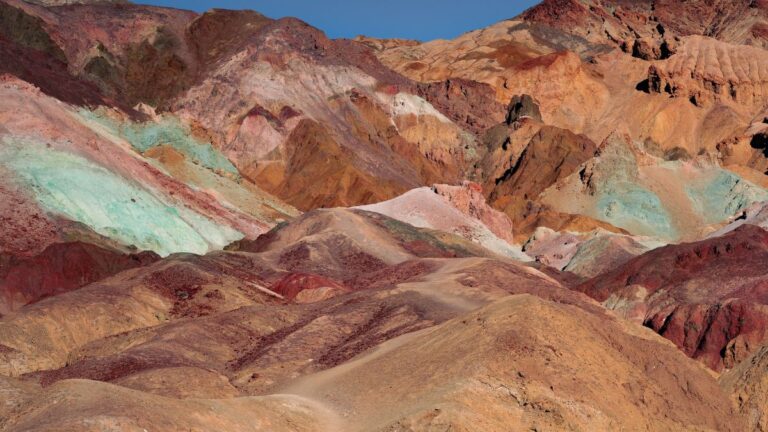Worst Time to Go to Colorado: Winter Chills and Summer Wildfire Threats

As participants in Amazon Associates and other programs, we earn from qualifying purchases. This comes at no additional cost to you. For more details, see our Affiliate Disclosure.
When planning a visit to the picturesque state of Colorado, timing is key. Known for its enchanting landscapes, ranging from snow-capped mountains to dense forests and rushing rivers, Colorado is a destination for every season. However, it is essential to remember that these varying landscapes come with their unique sets of challenges. Two critical periods – the bone-chilling winters and the wildfire-prone summers – can significantly affect your visit.
This article delves into the potential risks and obstacles you might face during these times, to help you plan a safer and more enjoyable trip to Colorado.
The Grip of Colorado’s Winter: From Sub-zero Temperatures to Snowstorms
The grip of Colorado’s winter is something to behold. The season usually begins in November and stretches out until March, transforming the state into a frosty wonderland. Winter here often conjures images of soft snowflakes delicately falling on the majestic Rocky Mountains, and indeed, Colorado is renowned for its snowy peaks, offering some of the world’s best skiing destinations.
However, it’s not just the charming holiday scenery that comes with this season. Colorado winters can be bitterly cold, with temperatures often plunging well below freezing. These sub-zero conditions are more common in the mountainous areas, but even lower altitude regions can see temperatures drop significantly.
Moreover, the state is notorious for its powerful snowstorms, known as blizzards, which can blanket entire cities overnight. These storms often come with strong winds and heavy snowfall that significantly reduce visibility and make travel extremely hazardous.
Roads can quickly become treacherous, with black ice making for perilous driving conditions. These factors can lead to road closures, delays, and sometimes, accidents. Even airports can be forced to shut down, stranding travelers and disrupting travel plans.
Lastly, while winter sports enthusiasts might revel in the abundant snowfall, for the uninitiated, the cold and snow can make participating in or even accessing these outdoor activities challenging. Extreme cold can increase the risk of frostbite and hypothermia, and blizzard conditions can cause avalanches, posing significant risk to skiers and snowboarders.
As such, the winter’s icy grip on Colorado can be a breathtaking spectacle, but it also brings with it some considerable challenges and risks. For travelers, being prepared for the harsh winter conditions is key to ensuring a safe and enjoyable visit.
Navigating Colorado’s Icy Roads: Winter Travel Challenges
Traveling in Colorado during the winter months can present a unique set of challenges. The state’s highways and mountain passes are often coated with snow and ice, creating hazardous driving conditions that demand careful navigation and proper vehicle preparation.
One of the first considerations should be your vehicle itself. A car with all-wheel drive is preferable for handling slick, snowy roads, and winter tires can significantly improve traction. If you’re planning on venturing into particularly snowy areas or up mountain passes, having chains on hand for your tires can be a lifesaver.
Next, it’s crucial to understand the potential dangers of black ice – a thin layer of ice on the road that’s difficult to see. Black ice forms when temperatures hover near the freezing point and can often look like a wet or shiny spot on the road. It’s especially common at night and in the early morning, and can appear suddenly, making it one of the most treacherous winter driving hazards.
Being aware of road closures and delays is equally important. Snowstorms can lead to temporary or even prolonged closures of major roads and highways. Staying updated with real-time road conditions through Colorado’s Department of Transportation website can help you plan your journey and avoid getting stuck in the cold.
But sometimes, despite all precautions, you might find yourself stranded on the road due to sudden weather changes or vehicle issues. In such scenarios, having a winter survival kit in your car – including items like blankets, food, water, a flashlight, and a first aid kit – can prove to be vital.
While Colorado’s winter landscapes are undeniably beautiful, the icy roads that come with them can pose significant challenges. However, with careful planning, right equipment, and a constant eye on the weather, you can navigate these snowy paths safely.
Impact of Winter Weather on Colorado’s Outdoor Activities

Colorado’s winter weather, with its frosty landscapes and mounds of fresh snow, is a paradise for outdoor enthusiasts, particularly those fond of winter sports. The state boasts a plethora of ski resorts, snowboarding slopes, and cross-country skiing trails that attract countless visitors each season. However, the very weather that enables these activities can also pose risks and challenges that could significantly impact your outdoor pursuits.
First and foremost, severe winter weather can disrupt access to certain areas. Heavy snowfall and blizzards can lead to road closures, making it challenging to reach skiing destinations or trailheads. Ski resorts may also need to temporarily close lifts or slopes due to adverse weather conditions or for avalanche control work.
Extreme cold is another factor to consider. Extended exposure to low temperatures increases the risk of frostbite and hypothermia. Even though winter gear can offer some protection, it’s essential to monitor the weather and limit time outside during particularly cold spells.
Avalanches pose a significant risk in the mountainous regions of Colorado. The combination of heavy snowfall and shifting weather conditions can create unstable layers in the snowpack, leading to potential avalanches. This risk is not only a concern for backcountry skiers and snowboarders but can also affect those on established slopes.
Finally, the winter weather can affect visibility. Snowstorms can quickly reduce visibility to near-zero, making navigation challenging and potentially dangerous. Fog, common after a snowfall, can also limit sightlines on the slopes, increasing the risk of accidents.
Despite these challenges, Colorado’s winter weather also creates opportunities for some truly memorable outdoor experiences. It’s a matter of being aware, prepared, and respectful of the weather and its potential impact on your outdoor activities.
Summer’s Blaze: Understanding Colorado’s Wildfire Season
Summers in Colorado can be as dramatic as its winters, but for an entirely different reason: wildfires. Typically starting in June and continuing until September, wildfire season is a time when the usually verdant landscapes can transform into a fiery spectacle, posing serious risks and challenges for both residents and visitors.
The primary reason behind these wildfires is the combination of hot, dry weather, and an abundance of vegetation. Summer temperatures in Colorado can soar, creating ideal conditions for fires to ignite and spread. Additionally, the state’s diverse vegetation, nurtured by spring rains, can act as a significant fuel source for these wildfires.
Lightning strikes are a common natural cause of wildfires, but human activities also play a significant role. Unattended campfires, discarded cigarette butts, and even sparks from chains dragging behind a vehicle can all trigger a fire. Once started, the wildfires can rapidly spread, fanned by strong summer winds.
Smoke from wildfires can greatly affect air quality, reducing visibility and causing a variety of health problems, particularly for those with respiratory conditions. Depending on the wind direction and intensity of a fire, smoke can sometimes reach urban areas far from the fire itself, making it a widespread concern.
Furthermore, wildfires can lead to temporary closures of parks, hiking trails, and camping sites. They can even necessitate evacuation orders in some cases, disrupting travel plans and posing potential safety risks.
Being aware of and understanding Colorado’s wildfire season is crucial for those planning a summer visit. While wildfires are a natural part of the ecosystem and play a role in shaping Colorado’s landscapes, they can significantly impact your summer adventures in the state.
Effects of Wildfires on Air Quality and Outdoor Excursions
Wildfires are more than just a visually arresting spectacle; they have far-reaching impacts, particularly on air quality and outdoor activities. When a wildfire burns, it releases a dense plume of smoke filled with fine particles, gases, and other pollutants that can significantly deteriorate the air quality over large areas, often impacting regions far beyond the fire’s immediate location.
The fine particulate matter in wildfire smoke can pose severe health risks when inhaled. These tiny particles can penetrate deep into the lungs, leading to a range of health issues, from eye and respiratory tract irritation to more severe conditions like bronchitis, asthma attacks, and even heart attacks in people with pre-existing heart conditions. Those particularly at risk include children, older adults, and individuals with respiratory conditions or heart disease.
The diminished air quality can also affect visibility, not only making for hazy views but also posing a safety hazard for drivers. It’s essential to drive carefully, use headlights, and keep a safe distance from other vehicles when visibility is poor due to smoke.
Outdoor activities, a major draw for many visitors to Colorado, can also be heavily impacted by wildfires. Hiking, camping, and other recreational activities may be less enjoyable or even unsafe when smoke levels are high. Popular trails and parks may be temporarily closed due to fire danger, and the risk of sudden evacuation can disrupt even the best-laid travel plans.
When planning an outdoor excursion during wildfire season, it’s vital to stay informed about current fire conditions and air quality. Websites like AirNow provide real-time air quality information, and local news sources and state park websites often offer updates on park closures and fire conditions. Staying aware and adaptable is crucial in ensuring a safe and enjoyable visit to Colorado during the wildfire season.
Precautionary Measures for Visiting During Wildfire Season
If you’re visiting Colorado during wildfire season, taking certain precautionary measures can help ensure a safer, smoother trip. Here are some strategies to consider:
- Stay Informed: Keep an eye on local news sources for updates on wildfires in your area or areas you plan to visit. Websites like the Colorado Division of Homeland Security & Emergency Management or InciWeb provide real-time information about active fires, evacuation orders, and road closures.
- Check Air Quality: Use resources like the Environmental Protection Agency’s AirNow website to monitor air quality. If the air quality is poor, consider limiting time outdoors, especially strenuous activities like hiking or biking.
- Plan Multiple Routes: Given the potential for sudden road closures due to wildfires, it’s wise to plan alternative routes to your destinations. GPS systems might not always be up-to-date with real-time road closures, so having a backup plan can save you from unwanted hassles.
- Follow Fire Restrictions and Bans: Fire restrictions or bans are commonly put in place during wildfire season to prevent new fires. These might include bans on open fires, fireworks, or smoking outdoors. Make sure you’re aware of and follow these rules.
- Prepare an Emergency Kit: Especially if you’re camping or hiking in remote areas, have an emergency kit ready. This could include first aid supplies, extra food and water, a flashlight, a multi-tool, and local maps.
- Practice Campfire Safety: If campfires are allowed, make sure to fully extinguish yours before leaving it unattended. Never leave trash behind as certain items can ignite and cause a wildfire.
- Respect Wildlife and Nature: Stay on designated trails and avoid areas marked as closed. These measures are often taken to protect both visitors and the natural environment.
By staying informed, taking precautions, and respecting local regulations and the environment, you can contribute to wildfire prevention efforts and ensure a safer visit during Colorado’s wildfire season.
Alternatives: The Best Times to Visit Colorado
While Colorado’s winters and summers each have their unique challenges, the state’s shoulder seasons – spring and fall – offer stunning natural beauty with milder weather, making them fantastic alternatives for your visit.
Spring (April to June)
Spring is a time of renewal in Colorado, with blossoming flowers, budding trees, and the gradual melting of winter snow. The weather can be a bit unpredictable, with a mix of warm sunny days and occasional late-season snowstorms, especially in the mountains.
However, this also means fewer crowds at popular tourist spots, lower prices, and a host of activities like hiking, fishing, and whitewater rafting that you can enjoy. Just remember to pack layers to account for changing temperatures.
Fall (September to November)
Fall is arguably one of the best times to visit Colorado. The weather is generally dry and mild, perfect for exploring the outdoors. The highlight of the season is the spectacular fall foliage.
Aspens turn brilliant shades of yellow and orange, creating mesmerizing landscapes, particularly in the Rocky Mountains. This is also a great time for hiking, biking, and wildlife viewing, as animals prepare for the winter.
No matter when you choose to visit Colorado, each season offers its unique charm and activities. By understanding what each season offers and their associated challenges, you can select the best time that suits your interests and comfort level, ensuring an unforgettable trip to the Centennial State.
Safe and Informed: Making the Most of Your Colorado Trip
Ensuring a safe and enjoyable trip to Colorado, regardless of the season, primarily comes down to preparation, awareness, and respect for nature’s forces. Here are a few tips to help you make the most of your Colorado trip:
- Do Your Homework: Research about the season you’re planning to visit in, understand its challenges, and prepare accordingly. Keep track of weather forecasts, and be aware of the local news concerning road conditions and potential hazards.
- Prepare Your Gear: Pack clothing suitable for the season, with layers to adapt to changing temperatures. In winter, bring warm, waterproof clothing and good boots. In summer, carry light clothing, but also a rain jacket as afternoon thunderstorms are common.
- Stay Informed: Keep an eye on real-time updates about road conditions, wildfires, and other safety advisories. This will allow you to adjust your plans as needed and stay safe.
- Respect Nature: Adhere to park rules and regulations, stay on designated trails, and maintain a safe distance from wildlife. If camping, ensure your campfire is fully extinguished before leaving.
- Stay Hydrated and Watch for Altitude Sickness: Colorado’s high altitude can affect visitors unaccustomed to it, causing altitude sickness. Drinking plenty of water, taking it easy for the first day or two, and limiting alcohol can help.
- Be Flexible: Understand that weather and other natural factors may necessitate changes to your itinerary. Having a flexible attitude can ensure that unexpected changes don’t dampen your experience.
Colorado’s diverse landscapes and climate can offer a rich and unforgettable travel experience. By staying safe and informed, you can make the most of what this incredible state has to offer, turning potential challenges into opportunities for adventure and discovery.






